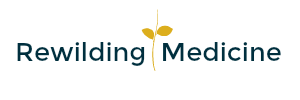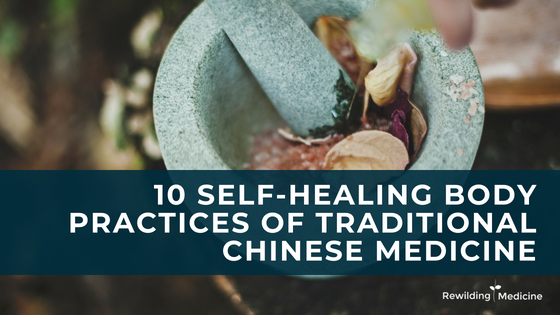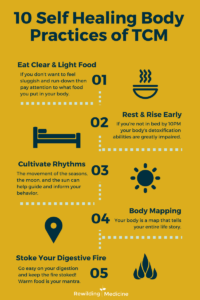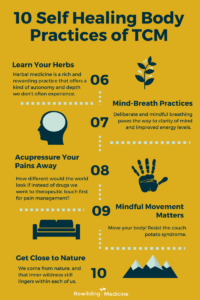Epic health is built on behaviors. And when we bring awareness to our body practices, we can shift our daily habits to evolve our health in a good way.
Take a moment and ask yourself, “what kind of body practices do I currently have?”.
Pause. Wait for the answer.
Go ahead and take a quick review.
- When are you sleeping?
- What are you eating?
- How are you moving (or not moving) your body?
- What chemicals are you putting on or in your body?
- How much time are you spending indoors?
- Are you breathing shallow?
- Do you have negative self speak?
Now, how are you feeling in your body?
- Are you tired and cranky?
- Are you craving sweets like crazy?
- Do you feel sluggish and heavy?
- Is depression or anxiety a thing for you?
- Do you have brain fog much?
- How is your gut feeling these days?
If you’re feeling less than awesome about your answers to these questions then something about your daily body practices is off. And when you feel better in your body you can show up for your life, relationships, and the planet more fully.
You see if our behaviors are the crux of our woes, then we need a system that can help inform our behaviors.
Enter…Traditional Chinese Medicine (TCM).
For the past 2500 years or so TCM scholars been studying, applying, and refining the art and science of living long and living well. Known as yang sheng, or the nourishing life tradition, this school of thought has uncovered 10 body practices that can amplify self-healing.
These 10 body practices are summarized below:
1. Eat Clear & Light Food
If you don’t want to feel sluggish and run-down then pay attention to what food you put in your body. In TCM, we speak about qing dan foods versus wei foods.
Qing dan roughly translates to clear and light foods (really, clear and bland foods, but many folks don’t like the word bland). These are foods that are easy to digest and don’t tax the digestive system. Wei foods in contrast are heavy and rich foods, and should be eaten only in small amounts.
The trouble with much of the modern diet is that it is laden with wei foods, and super low on qing dan foods.
2. Rest & Rise Early
With the advent of modern technology people are detached from natural day-night cycles. Often, folks go to bed far too late cause they’re watching television or hanging out on their smart phone. All that technology overwhelm creates an excitatory brain state that makes for less restful sleep and a groggy wake up in the morning.
Not only that but our body rests and repairs during the nighttime hours. In TCM, our liver literally recharges and cleanses our blood between 11PM and 1AM. If you’re not fully asleep during this time your body’s detoxification abilities are greatly impaired. This leads to a build up of toxins and tons of stagnation over time.
If you want to prevent disease and feel more refreshed, be sure to get to bed early!
3. Cultivate Rhythms
Humans respond exceptionally well to rhythm. The movement of the seasons, the moon, and the sun can help guide and inform our behavior. But we have to pay attention. As diurnal (awake during the day) mammals we thrive when our dietary behaviors and activity patterns coincide with the cycles of nature. When we live in opposition to them we experience less of our potential.
Circadian rhythms are described as the internal clock that we can hang our hat on as humans. Hormones, including cortisol and melatonin, do a careful dance within a 24-hour window. Known as the “stress hormone”, cortisol levels of modern humans are super jacked. Our adrenal glands (which produce cortisol) go into overdrive trying to keep up with our out-of-sync lifestyles that demand wacky hours, 10 hour work days, and constant stress-inducing experiences. All of this goes against our physiology.
Since cortisol is also the “get up & go hormone” you’ll have a hard time getting out of bed in the morning and feel super run down during the day if this hormone is wonky. To make matters worse, irregular cortisol levels also mess with melatonin, the “restful sleep” hormone. So not only will you be tired during the day, but you’ll have a hard time sleeping at night too.
All in all, do your best to fall into rhythm. Use nature as your guide and pay attention to ecological cues.
4. Body Mapping
Your body is a map that tells your entire life story. Getting acquainted with this map is essential for steering your body toward a better health trajectory. Before the age of imaging, blood tests, and technology-based diagnostic tests, healers learned to look, listen, smell, and palpate (i.e. feel) to uncover disharmony in the body.
For example, someone with a very thick yellow coat in the middle of their tongue, likely has digestive discomfort, like gas, bloating or indigestion. If there is a vertical crack in the middle of the tongue, that often symbolizes long standing (i.e. chronic) digestive issues. The deeper and longer the crack, the more severe the condition.
Start off each morning by taking a peek at your tongue in the mirror. Look for subtle changes in the tongue and tongue coat, and begin to review which daily behaviors might be reflected back to you simply by looking in the mirror.
5. Stoke Your Digestive Fire
The spleen likes warmth. That may sound like a weird statement (and it is), but in it lays the secret to sound digestive functioning.
In TCM, the spleen helps cook food and transforms and transports nutrients throughout the body. It’s kind of like a camp fire that literally helps heat up and digest our food, with the stomach being like a pot of water on top of the fire. If you’re looking to improve your digestion, it is super important to stay away from “cold” foods.
Cold foods might be things that are actually cold in temperature, like ice water, or foods that have a cold nature, like cucumbers or raw foods in general. That means soup, stew, and congee are often much better for folks with stomach issues like stomachaches or nausea.
Go easy on your digestion and keep the fire stoked! Warm foods is your mantra.
6. Learn Your Herbs
In previous times people didn’t have pharmaceuticals as a go-to for things like infections, headaches, and menopause. Instead they went to the land for their food and medicine needs. Herbal medicine, which includes plant, animal, and mineral-based substances, have formed the stronghold of human communities for eons.
Since modern people are utterly disconnected from the land, getting acquainted with herbs might look a little different than it did for our ancestors. Learning to recognize and befriend plants, as well as harvest with respect and a sense of reciprocity, is an art and a practice. However, developing a relationship with plant medicinals is an effort worth making.
A great place to start is to work with plants as herbal infusions, or tisanes. (To clarify, “tea” refers to all infusions made from a single plant, Camellia sinensis, while “tisanes” refers to herbal infusions made from any other plant leaves, bark, roots, fruits, seeds, or flowers.) Tisanes are easy to make, their effect on the body is often gentler, and their taste a bit more approachable. Some of my favorites are chamomile, stinging nettle, mint, ginger, and slippery elm.
Herbal medicine is a rich and rewarding practice that offers a kind of autonomy and depth we don’t often experience. Take your time to get know plants and their medical uses. Maybe start with one plant a month. Learn about the plant’s life – where it grows, who it grows next to, how it lives and interacts with its environment, and how earlier peoples prepared it as medicine, food, and textile. Then introduce yourself – hold the plant in your hands, smell the raw herb, and sit with it for a moment Then experience the feeling it produces in your body – mindfully steep a pot of herbs, then slowly take a sip, notice the temperature and subtle tastes. Do a quick body scan after you’ve had a few sips and notice how your body feels.
(Note: This is NOT a one-way extraction of resources for your own use. This is an exchange between you and another living being. There’s a respect and sense of gratitude that we presence when we come into relationship with plants as medicine. More on this another time!)
7. Mind-Breath Practices
Shallow breathing is the norm in modern life. People rush to and fro never pausing to simply take a breath. In traditional cultures around the world breathing represents the gateway to vitality.
Deliberate and mindful breathing paves the way to clarity of mind and improved energy levels. In TCM, the lungs play a crucial role in the body’s energy production. When we breathe deep, we have deep reserves of energy. When we breathe shallow, we feel chronically run down and depressed.
Take a moment to breathe. In particular, if you can slow your breath down to 4 breaths/minute (think a 15 second cycle for the inhale and exhale) your body will have a hard time producing stress hormones. So, chill out, take a moment, and just breathe.
8. Acupressure Your Pains Away
Opiod pain medications are wreaking havoc on our communities these days. With millions of people annually seeking some sort of pain relief, popping pills has become the cultural norm. Sadly, the harmful and addictive side effects of these pharmaceuticals is often overlooked.
How different would the world look if instead of drugs we went to therapeutic touch first for pain management? Tui-na (pronounced “twee-nah”), or medical massage, has been used by Chinese Medicine doctors since at least the first century BC. In fact, the earliest archaeological evidence of tui-na dates back to 2700 BC!
Tui-na involves the manual manipulation of soft tissue of the body using therapeutic massage techniques and includes what we commonly refer to as acupressure. Based upon meridian theory and Chinese Medicine physiology, acupressure can be easily done at home, by yourself or on others, and can quickly, effectively, and safely reduce pain.
Next time you have a headache try pressing around in the area of pain and on your hands and feet. If you feel any sore or tender spots, hang out there and use a circular motion to press a bit harder in those areas. Typically, massaging “acupressure-style” for 1-2 minutes on a few points can help reduce your pain right then and there.
9. Mindful Movement Matters
Humans are not meant to be sedentary. But with the advent of indoor living, climate-controlled environments, and screen-based habits, sitting down all day is the status quo. And it’s taking a toll on our health.
Historically, humans performed well over 100 different bio-mechanical movement patterns/postures. Today, modern humans predominately have three – sitting, standing, walking. If people are meant to move it’s no wonder orthopedic surgeons are in high demand and musculoskeletal pain is rampant.
Get out and move your body! Resist the couch potato syndrome. Better yet, engage in a form of mindful movement, like tai chi, qi gong, and yoga. It’s one of the “hidden secrets” of living long and aging well.
10. Get Close to Nature
We come from nature, and that inner wildness still lingers within each of us. It yearns to be cultivated and nurtured in ways that carry meaning and significance.
In Japan the research field of Shin-Rin Yoku, or forest bathing, has documented the therapeutic benefits of nature connection (in particular, in forested environments.) It appears that quality time spent in nature can help reduce stress levels, alleviate pain, and lower blood pressure (among other things). It’s no wonder the field of forest therapy is booming these days!
Meanwhile, in TCM we speak of the five elements (or Wu Xing). Five element theory describes primal characteristics that show up in all walks of our lives. Each person has a constitutional tendency toward one element type – fire, earth, metal, water, or wood. That element in part determines how a person sees the world, which diseases they’re more likely to succumb to, what foods work best for their body, and so on and so forth. For example, someone with a wood constitution will be very determined, somewhat authoritarian, have a sinewy body type, feel frustrated or angry more often, and may develop liver and/or eye disorders more so than someone who is a water type.
The point is that we are part of nature, and nature is part of us. We cannot, and should not, attempt to separate the two.
(Here’s a fun little graphic below of the 10 Self Healing Body Practices of Traditional Chinese Medicine. Feel free to click on each image and print a PDF to hang on your fridge!)
P.S. If you want to learn how to apply the 10 Self Healing Practices of TCM to your everyday life then stay tuned for our upcoming online course, Become Your Body’s Healer. Join our email list to stay informed about when this course will open!



